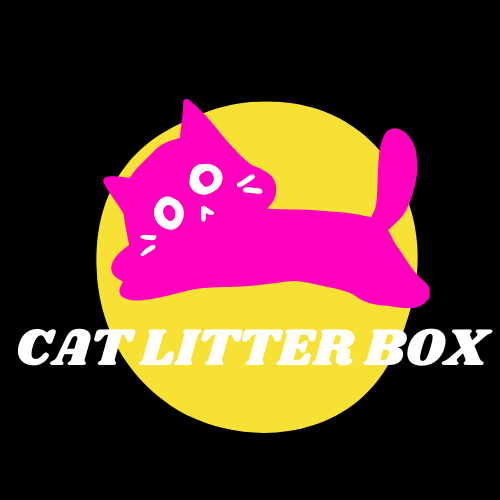At
Cat-Litter-Box.co.uk, we help UK cat owners find the
best self-cleaning litter box on the market — from smart tech-enabled models to simple hands-free solutions that take the hassle out of litter duty.
Whether you’ve got a single kitty or a multi-cat household, this site is packed with
in-depth reviews,
side-by-side comparisons, and
expert guides — all designed to help you choose the right automatic litter box with confidence.
Keeping your cat’s litter box clean is essential — but that doesn’t mean
you should be the one scooping every day.
PETKIT PURA MAX 2 Self Cleaning Cat Litter Tray, App Control, 76L Extra Large Automatic Cat Litter Tray for Multi-cats, Odour Control with N50, xSecure Robot Litter Box, Includes Trash Liner
PetSnowy Self Cleaning Cat Litter Tray, Automatic Cat Litter Tray, Robot Litter Box with Odour Control TiO2 System, Auto-Packing, App Control, Large Cats & Multiple Cats Friendly(2025 Premium)
ABRCT Self-Cleaning Litter Box Automatic Electronic Hands-Free Smart Robot self Cleaning Litter Box - Large 60L Capacity, Safe Anti-Pinch,with Deodorizer and Liner,for Multiple Cats (Grey Pro)
HoneyGuaridan Self Cleaning Cat Litter Box with APP Control, Waterproof Automatic Cat Litter Tray, Smart Robot Litter Box, Safety Protection 0 Risk, Odor-Free, 63L Large-Open for Multi-Cats 3-33lb
PETKIT PURA MAX 2 Self Cleaning Cat Litter Tray, App Control, 76L Extra Large Automatic Cat Litter Tray for Multi-cats, Odour Control with N50, xSecure Robot Litter Box, Includes Trash Liner
PetSnowy Self Cleaning Cat Litter Tray, Automatic Cat Litter Tray, Robot Litter Box with Odour Control TiO2 System, Auto-Packing, App Control, Large Cats & Multiple Cats Friendly(2025 Premium)
ABRCT Self-Cleaning Litter Box Automatic Electronic Hands-Free Smart Robot self Cleaning Litter Box - Large 60L Capacity, Safe Anti-Pinch,with Deodorizer and Liner,for Multiple Cats (Grey Pro)
HoneyGuaridan Self Cleaning Cat Litter Box with APP Control, Waterproof Automatic Cat Litter Tray, Smart Robot Litter Box, Safety Protection 0 Risk, Odor-Free, 63L Large-Open for Multi-Cats 3-33lb
🚀 Top-Rated Premium Self-Cleaning Litter Boxes (2025)
If you’re looking for the latest in litter box technology — think AI-powered health tracking, app control, and odour-sealing systems — these high-end models deliver serious performance.
| Product |
Key Features |
Capacity |
Price |
Buy |
| PETKIT PUROBOT ULTRA |
AI camera, health monitor, waste packing, app-controlled |
70L |
£849.00 |
Buy on Amazon |
| PETKIT PURA MAX 2 |
Extra-large 76L, app control, N50 odour filters, xSecure |
76L |
£559.99 |
Buy on Amazon |
| PetSnowy 2025 Premium |
TiO₂ odour system, auto-packing, sleek design |
Large |
£559.99 |
Buy on Amazon |
| ABRCT Grey Pro |
Built-in deodorizer, safe anti-pinch, hands-free |
60L |
£585.17 |
Buy on Amazon |
Each of these models is ideal for tech-savvy cat owners, especially in
multi-cat homes where daily scooping becomes overwhelming.
💸 Best Budget Self-Cleaning Litter Boxes That Still Deliver
You don’t have to break the bank to go automatic. These
mid-range and budget-friendly self-cleaning litter boxes offer solid functionality without the luxury price tag.
| Product |
Key Features |
Capacity |
Price |
Buy |
| HoneyGuaridan Smart Box |
App control, waterproof, 0-risk safety |
63L |
£399.00 |
Buy on Amazon |
| Neakasa M1 |
Open-top design, trash bags + mat included |
N/A |
£599.99 |
Buy on Amazon |
Perfect for first-time buyers, these options give you the
core benefits of automatic cleaning and odour control at a lower cost.
🐾 Why Switch to a Self-Cleaning Litter Box?
If you’re still using a manual tray, here’s why thousands of UK cat owners are upgrading to self-cleaning litter boxes:
- No more daily scooping
- Improved odour control
- Cleaner environment for your cat
- App control & usage tracking
- Better for multi-cat homes
Plus, with smart features like
health monitoring and
automatic waste disposal, many models are now doubling as part of your cat’s wellness toolkit.
🔍 Need Help Choosing?
Not sure where to start? Explore our expert resources:
We break down features, compare top models, and help you make sense of the tech — so you can focus on what matters: your cat’s comfort.
💡 Final Tip
Choosing the right litter box can make life easier for both you
and your cat. Start with one that suits your space, budget, and cat’s temperament — and you’ll never look back at the old scoop again.
Disclosure: This site contains affiliate links. When you click and buy, we may earn a small commission — at no extra cost to you. Thanks for supporting our site 🐱





